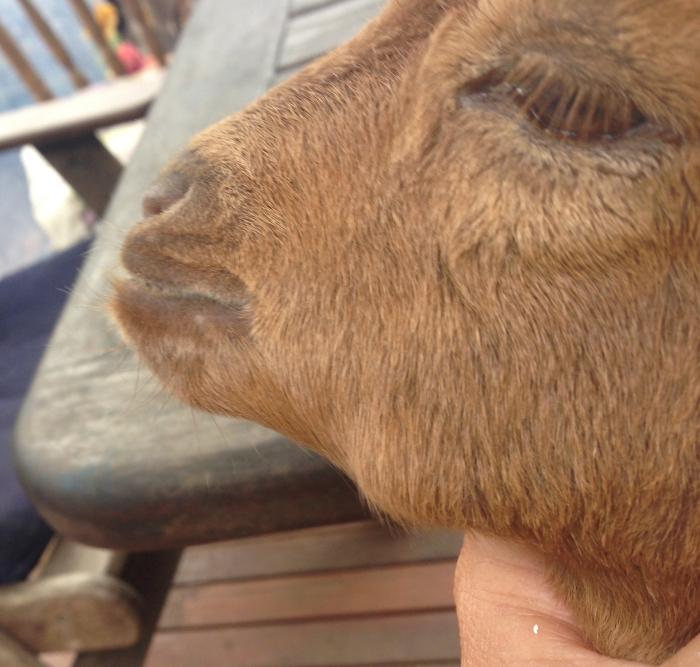
Abscesses can occur on most animals but are quite common on goats. An abscess is a swelling with a lumpy appearance and will be filled with fluid (pus). They can appear anywhere on the body and many times are not cause for alarm. An abscess can be misdiagnosed and should be seen by a veterinarian especially if the lump is located on the udders or if more than one goat in a herd is affected.
A bacterium is typically the cause of most abscesses with corynebacteria being one of the more common causes in goats. Staphylococci, streptococci, and Escherichia coli (e-coli) are also sources of these infected pockets. Because the different bacteria are destroyed by different measures, a veterinarian may need to take a culture of the abscess to determine the infection and the best course of action.
Many times, these fluid-filled pockets will burst over time and those that don’t rupture are sometimes reabsorbed by the body. Abscesses should be closely monitored as the pus is filled with bacteria and can be spread after breaking open. Lancing of the abscess should only be done by an experienced goat handler, owner, or veterinarian. After this type of procedure, the lesion will need cleaned from the inside out. The pocket will need flushed out, sterilized, and a topical antibiotic applied to the wound. Antibiotics are usually prescribed to treat abscesses that are infected, do not appear to be healing, or if the abscesses are spreading in a herd. Because abscesses do not have appropriate blood supply, antibiotics may not be able to travel to the lesion. Vaccines are available for abscesses that do not react after administering antibiotics.
There are precautions that should be considered before caring for a goat with abscesses. Anyone caring for these lesions should protect their hands with latex gloves whenever examining or touching the abscesses. Goat milk should be disposed of when the abscesses are located on the udders. Children should be kept from playing with goats that are affected. An infection known as Caseous Lymphadenitis (CL) is the main source of most goat abscesses. Caused from a bacterium (Corynebacterium pseudotuberculosis), this infection affects the lymph nodes with most goats being destroyed if both lymph nodes become affected. There are no cures for this widespread problem among goat herds however, a vaccine is available that may help against these types of abscesses.
Abscesses on goats are commonly found under the jaw and can form at the site where certain vaccinations have been administered. Bottle jaw and joint infections can be mistaken for abscesses along with several other goat disorders. Until the cause of the abscess has been confirmed by lab testing it is important to take preventative measure so other animals do not become infected if it happens to be contagious. Owners should examine their goats on a regular basis, checking for anything out of the ordinary including abscesses. Any goat found with an abscess should be quarantined from other animals until the lesion is fully healed. Any items used on a goat including needles, hoof trimmers, and ear taggers should be sterilized before using on another animal to prevent cross contamination. When purchasing new animals, examine the body closely for any abscess scars. The environment of all goats should be kept sanitary to lessen the chances of a goat coming in contact with harmful bacteria. Goat owners should always consult with their veterinarian whenever a lesion appears on a goat’s body. With proper treatment, most types of abscesses should heal successfully and not have any long-term effect on the goat.
Author, Angela Pollock.. References: Veterinary Guide for Animal Owners, by C.E. Spaulding, D.V.M., Jackie Clay
Related Articles & Free Email Newsletter Sign Up
Did You Know This About Llamas and Alpacas
How to Identify & Treat Goat Hair Loss
How to Recognize and Prevent Impending Health Problems in Goats




Comment here